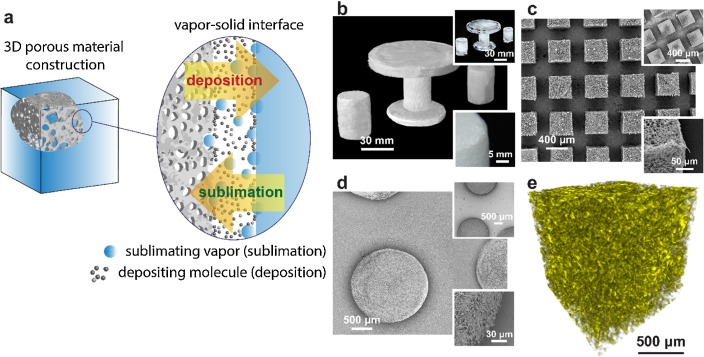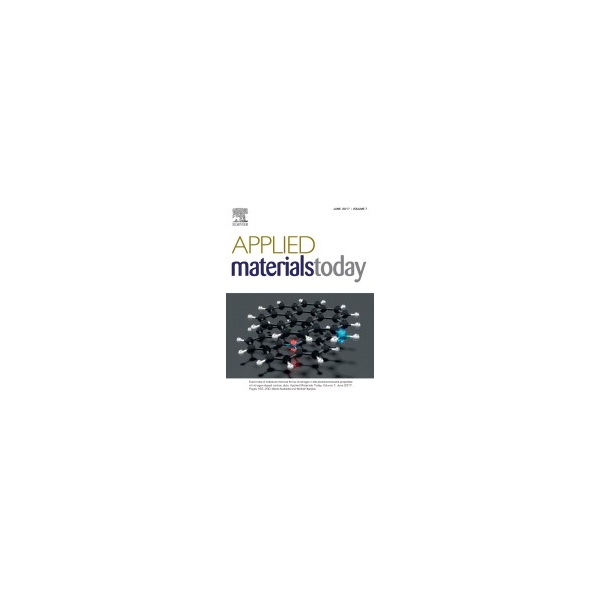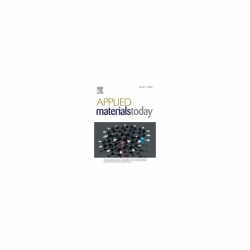Abstract
Three-dimensional porous structures are constructed via vapor deposition onto a sublimating solid template. Construction upon deposition of vapor-phase material occurs at a dynamic vapor–solid interface and is directed by the solid surface vanishing by sublimation. A proof-of-concept demonstration showed vapor depositions of poly-para-xylylenes (PPXs) on sublimating templates, including ice and mixtures with ethanol and hexane. The material construction macroscopically produces a replica architecture of the parent template. Characteristics of the pore structures are formed during the construction process as a result of the gas vapor and the space that is vacated by sublimation, thus enabling control of the porosity through regulation of the sublimation speed and/or the thermodynamic properties of the templates. The technology introduced herein provides a novel approach for 3D porous material manufacturing and overturns the notion that vapor deposition necessarily forms dense thin films on substrates.
Graphical abstract
Three-dimensional porous structures are constructed via vapor deposition onto a sublimating solid template. Construction upon deposition of vapor-phase material occurs at a dynamic vapor–solid interface and is directed by the solid surface vanishing by sublimation. A novel approach for 3D porous material manufacturing overturns the notion that vapor deposition necessarily forms dense thin films on substrates.



.png)